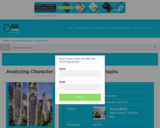
Students create epitaphs for characters from a tragedy, such as "Hamlet".
- Subject:
- English Language Arts
- Material Type:
- Activity/Lab
- Lesson
- Provider:
- ReadWriteThink
- Provider Set:
- ReadWriteThink
- Date Added:
- 10/05/2018

Students create epitaphs for characters from a tragedy, such as "Hamlet".

Students are often asked to perform speeches, but rarely do we require students to analyze speeches as carefully as we study works of literature. In this unit, students are required to identify the rhetorical strategies in a famous speech and the specific purpose for each chosen device. They will write an essay about its effectiveness and why it is still famous after all these years.

By analyzing Dear AbbyŐs ŇrantÓ about bad grammar usage, students become aware that attitudes about race, social class, moral and ethical character, and ŇproperÓ language use are intertwined.

Students apply the analytical skills that they use when reading literature to an exploration of the underlying meaning and symbolism in Hieronymous BoschŐs early Renaissance painting "Death and the Miser".
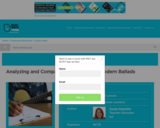
Students explore the ballads genre by reading medieval ballads to deduce their characteristics, acting out the ballads, comparing medieval and modern ballads using Venn diagrams, and composing their own ballads.

Students analyze images of Oscar Wilde used to publicize his 1882 American lecture tour. They then compare a caricature to another researched image, sharing this analysis in a podcast.
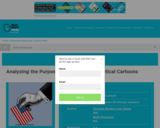
It is important for students to know how to evaluate messages conveyed by the news media. Exploration of the artistic techniques used in political cartoons leads to critical questioning.

Students explore and analyze the techniques that political (or editorial) cartoonists use and draw conclusions about why the cartoonists choose those techniques to communicate their messages.

"When executed correctly, anchor charts are a visual and tangible reminder of how to do something new and complex. They reveal choices, provide strategies, and foster independence— all of which build a student who possesses perseverance and grit. However, the potential impact of this instructional tool often goes untapped.<View> this 55-minute webinar to learn how to make anchor charts an integral component to effective instruction — regardless of grade level, content area, or classroom setting.AgendaLearn of the purposes, functions, and types of anchor charts.Build well-planned anchor charts with students and during instruction.Acquire various methods to share and store paper-based and digital charts."Supporting handout providedAll from Smekens Education

This is available in website and app versions. This is a very user friendly way to make podcasts. There are a variety of sound effects, clips etc to be used to make a polished more professional sounding podcast. Students - make sure you have your school's and parent's permission before using this!

Students review the basic conventions for using quotations from literature or references from a research project, focusing on accurate punctuation and page layout, then apply the conventions to their texts.
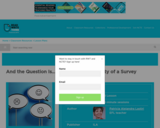
In this lesson, students learn to ask the right questions about the validity of surveys.

Theres no question that students will be able to compose good survey questions by the end of this lesson.
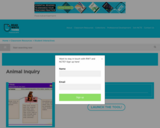
Supporting inquiry-based research projects, the Animal Inquiry interactive invites elementary students to explore animal facts and habitats using writing prompts to guide and record their findings.

Students listen to fiction and nonfiction read-alouds and explore selected Websites to identify factual information about animals. This lesson focuses on ants, but can be adapted to any animal.

We started this project by reading the story “Over & Under the Snow” By Kate
Messner. While reading the story, we talked about the different animals that we
saw and what they did in the pictures. After reading the book we, we made a
chart of animals that lived over the snow and animals that lived under the snow
(both from the story and our prior knowledge. We then decided to make a large
mural of what animals do over and under the snow with the list that we had
made. Students were split into different groups that were in charge of various
animals (ex. animals under the snow, animals over the snow, animals in the sky
and nature). Using their creativity, they were to create pictures of animals in their
certain category through collaboration with one another.
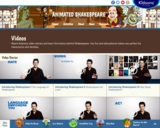
AnimatedShakespeare.com - Educational videos and teaching resources for classrooms. Animated Shakespeare are Kidoons stories, video, and class activities with classic American characters.
*Who was Shakespeare
*Intro to Shakespeare
*Power of Words
*Elizabethan Theatre
*Macbeth
Use the tab along the top to navigate to the activities.

Following the traditional form of the haiku, students publish their own haikus using Animoto, an online web tool that creates slideshows that blend text and music.

We know that the everyday lives of our students are inundated with media. This often-overwhelming menu of media-rich entrées gets served up at a rate that seems to value overconsumption more than proper and meaningful digestion. As educators, we may be left wondering, how do we beef up (or tofu up , if you prefer) our students’ appetites for media-literacy so that they can skillfully navigate our ever-changing, media-saturated landscape?

Nine-year old Anthony is proud of his history, culture, and family tradition of Mexican rodeo-style roping and riding. He also enjoys various aspects of his modern life such as school, basketball, friendships, swimming, and exploring.